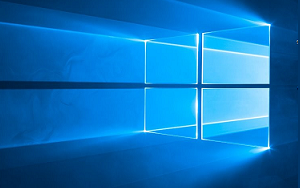Learn how to check and improve your iPhone's battery health with this comprehensive guide. We cover essential tips and tools to help you maintain optimal battery performance.
Introduction
In today's digital age, the iPhone has become an indispensable tool for our daily activities. However, one of the most common concerns among iPhone users is the battery life. Over time, all lithium-ion batteries, like those used in iPhones, degrade. Understanding how to check your iPhone's battery health and take steps to improve it is crucial for ensuring long-term performance.
Understanding iPhone Battery Health
Your iPhone's battery health is a measure of how well your battery can hold a charge compared to when it was new. Apple's iOS provides a built-in feature to check battery health, which includes metrics like Maximum Capacity and Peak Performance Capability.
Steps to Check Battery Health
- Open the Settings app on your iPhone.
- Scroll down and tap on Battery.
- Tap on Battery Health & Charging. Here, you will see two main metrics:
- Maximum Capacity: This percentage indicates how much charge your battery can hold compared to when it was new. A lower percentage means that the battery holds less charge.
- Peak Performance Capability: This indicates whether your iPhone can support normal peak performance.
Improving iPhone Battery Health
While battery health naturally diminishes over time, there are several ways to prolong the life of your iPhone's battery. Here are some practical tips:
1. Optimize Settings
- Enable Low Power Mode: This setting reduces background activity and helps save battery life. You can enable it by going to Settings > Battery and toggling on Low Power Mode.
- Adjust Screen Brightness: Lowering your screen brightness or setting it to auto-brightness can significantly reduce battery usage. Go to Settings > Display & Brightness to make adjustments.
- Disable Background App Refresh: Prevent apps from refreshing in the background by going to Settings > General > Background App Refresh and selecting Off or Wi-Fi.
2. Mind Your Charging Habits
Proper charging habits can help extend battery life:
- Avoid Extreme Temperatures: Keep your iPhone in environments between 0° and 35° C (32° to 95° F). Extreme temperatures can damage battery capacity permanently.
- Avoid Full Cycles: Instead of letting your battery drain completely and then charging to 100%, try to keep your battery level between 20% and 80%.
- Use Optimized Battery Charging: Enable this feature by going to Settings > Battery > Battery Health & Charging. It helps reduce battery aging by learning your daily charging routine.
3. Regular Software Updates
Apple frequently releases software updates that can help improve battery performance and efficiency. Ensure your iPhone is running the latest version of iOS by going to Settings > General > Software Update.
4. Monitor Battery Usage
Keep an eye on which apps are consuming the most battery power:
- Go to Settings > Battery.
- Scroll down to see battery usage by app.
- Identify apps that are draining battery and consider limiting their use or finding alternatives.
When to Consider Battery Replacement
If your iPhone's battery health falls below 80% or you experience performance issues, it might be time to consider a battery replacement. Apple offers battery service options, and replacing the battery can restore your iPhone to optimal performance.
Conclusion
Maintaining your iPhone's battery health is essential for ensuring its longevity and performance. By following the steps and tips outlined in this guide, you can effectively monitor and improve your battery health. Regularly checking your battery status and adopting good charging habits will help you get the most out of your iPhone for years to come.







